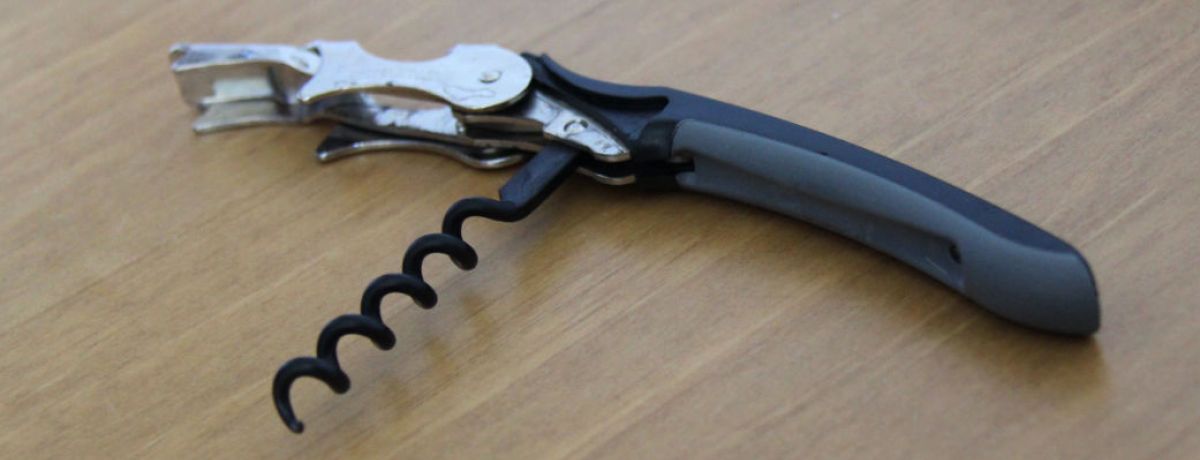How to open a wine bottle

A crucial stage! But not always as easy as it seems ...
Before wrestling with the cork or other stopper, the wine drinker encounters another illogical barrier to wine enjoyment, the often impenetrable foil or capsule that covers the cork. An increasing number of wine bottles are allowed on to the market without this addition, once useful for protecting against cork weevils but now largely cosmetic, except for bottles kept in a wine rack where foils can be useful for identification. Professionals try to cut the foil in a straight line round the bottleneck a few millimetres below the rim so that wine doesn't come into contact with the foil when it is poured. (The wine won't taste any different if you rip the entire foil off, as is sometimes inevitable, but it deprives you of one of the wine's distinguishing marks.) A sharp knife and a steady hand can achieve a neatly cut foil, but a specially designed foil cutter does it with much less effort. Some particularly sharp foil cutters can even help with those few bottlenecks still dipped in wax or covered with particularly thick plastic, although sometimes very thick wax has to be painstakingly, and messily, chipped off with a sharp knife and chisel.
Once the foil has been removed, you have to hope that a corkscrew will do the rest. Aim the screw down the centre of the cork. It can help to stand the bottle on a flat surface, holding it steady, while inserting the screw, and to jam it between your knees while pulling (so to speak). As with modern business, leverage is all. Synthetic corks can be particularly intractable. You may find this pictorial guide to using a wide variety of different corkscrews helpful.
If the cork crumbles under the impact of the corkscrew but won't come out, try inserting a corkscrew with a long narrow screw at an angle and/or into a different part of the cork. If that won't work, as with any intractable cork, you could try inserting the two-prongs of a butler's friend type corkscrew down either side of the cork and pulling it out, or you may have to simply push the cork into the bottle using, for example, the handle of a wooden spoon (a little more wood contact won't harm the wine). Do this as gently as possible and avoid wearing white if the wine is red, as pushing the cork can cause quite a splash.
Because the remains of the cork tend to float and block the bottleneck, and provided the wine is not some terribly fragile ancient liquid whose precious bouquet may be lost after a few minutes' exposure to air, it is worth continuing to push the cork remains down with your stick-like instrument while pouring the wine into a jug. You can then pour the wine, through a funnel lined with a clean coffee filter or muslin if necessary, into a clean bottle or decanter. You can also buy stainless steel very fine filter/funnel combinations.
Another possible ploy which requires some cunning is to warm (and therefore expand) the bottleneck without warming the cork. A cloth soaked in boiling water can be held round the bottleneck using an oven glove. If none of these ploys work, and it is feasible, take the bottle back to where you bought it and complain. (This is just one of the reasons why it can be a good idea to keep more wine in the house than you expect to consume.)
Synthetic corks, which are plastic cylinders moulded into the shape of a cork, are one of a range of products used to avoid the problem of cork taint while offering some of the ‘cork experience’. I can’t stand them. They have none of the ecological soundness of real cork. They look silly. Many of the ones I have come across are too inelastic to re-stopper an opened bottle. They tend to involve all the effort of trying to pull a fat cork out of a narrow bottle-neck, and they are not very good at remaining airtight for longer than a couple of years.
All this fuss is avoided of course if the bottle has a screwcap. Generally these come off very easily with a firm twist, though it helps to hold on to the lower half of the screwcap. Very occasionally an entire screwcap will spin round the bottleneck and the upper part shows no inclination to part from the lower half. Fiddling about with sharp knives in an attempt to overcome this can be dangerous and my advice would be to take the bottle back to the store.
Opening a bottle of sparkling wine
One eye doctor in the champagne town of Epernay treats up to 20 people a year who have been injured by wayward corks. The pressure in a bottle of sparkling wine is about three times that in the tyre of a double decker bus so champagne corks must be eased out of the bottleneck with enormous care. Untwist the wire muzzle and keep a thumb over the top of the cork. Point the bottle away from you and away from anyone else or any precious object, at an angle to increase the surface area of the wine and decrease the pressure in the wine. Twist the bottle off the cork rather than vice versa (to avoid breaking the cork), all the while holding the cork into the bottleneck with the thumb so that it is eased out with ‘the gentle sigh of a satisfied woman’, as cricket commentator and wine writer John Arlott would have it. Pour the wine carefully several times into each glass (allowing time for the mousse to subside), possibly taking a lesson from pub staff by holding the glass at an angle to control the foam.